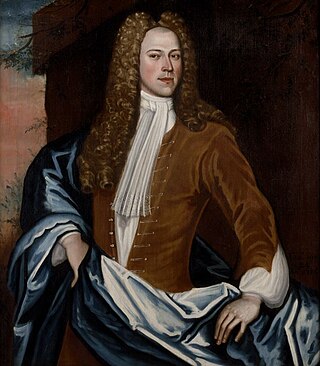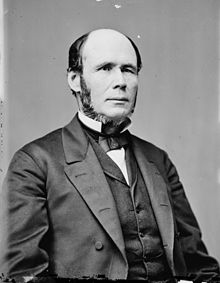
Leendert "Leonard" Gansevoort was an American political leader from New York who served as a delegate to the Continental Congress in 1788.
Egbert Ten Eyck was an American lawyer and politician from New York. In the mid-1820s, he served parts of two terms in the U.S. House of Representatives.

Gerrit Yates Lansing was an American lawyer and politician who served three terms as a U.S. Representative from New York from 1831 to 1837.

Abraham Gerritse Lansing was an American politician.

John Ten Eyck Lansing Jr., a Founding Father of the United States, was an attorney, jurist, and politician.

Jan Jansen Bleecker was a colonial era merchant and political figure who served as Mayor of Albany, New York.
Abraham Cornelius Cuyler was a businessman and the last mayor of colonial Albany, New York, the third generation in a row to serve in that office.
Jacob J. Cuyler was an American silversmith, active circa 1765-1790 in Albany, New York.
Jacob Coenraedt Ten Eyck was an American lawyer and politician from New York.

Johannes de Peyster or Johannes de Peyster III was the Mayor of Albany, New York three times between 1729 and 1742.

Volkert Petrus Douw was a merchant and politician from Albany, New York, who was prominent both during colonial times and after the United States was established.
Cornelis Cuyler or Cornelius Cuyler was a prominent American of Dutch ancestry who served as the Mayor of Albany, New York, from 1742 to 1746.
Myndert Schuyler was a colonial trader and merchant with extensive real estate holdings who served as Mayor of Albany, New York, twice between 1719 and 1725.
Johannes Cuyler was a prominent American merchant of Dutch ancestry who served as the Mayor of Albany, New York, from 1725 to 1726.
Dirck Ten Broeck was an American of Dutch heritage who served as Mayor of Albany, New York from 1746 to 1748.
Hendrick Hansen was the fifth Mayor of Albany, New York.
Johannes Bleecker Jr. was a colonial era merchant and political figure who served as Mayor of Albany, New York.
Rutger Jansen Bleecker or Rutger Bleecker was a colonial era merchant and political figure who served as Mayor of Albany, New York from 1726 to 1729.
Johannes Hansen or Hans Hansen was the Mayor of Albany, New York from 1731 to 1732.
Jacob H. Ten Eyck was an Albany merchant and alderman who served as a member of the New York General Assembly.









